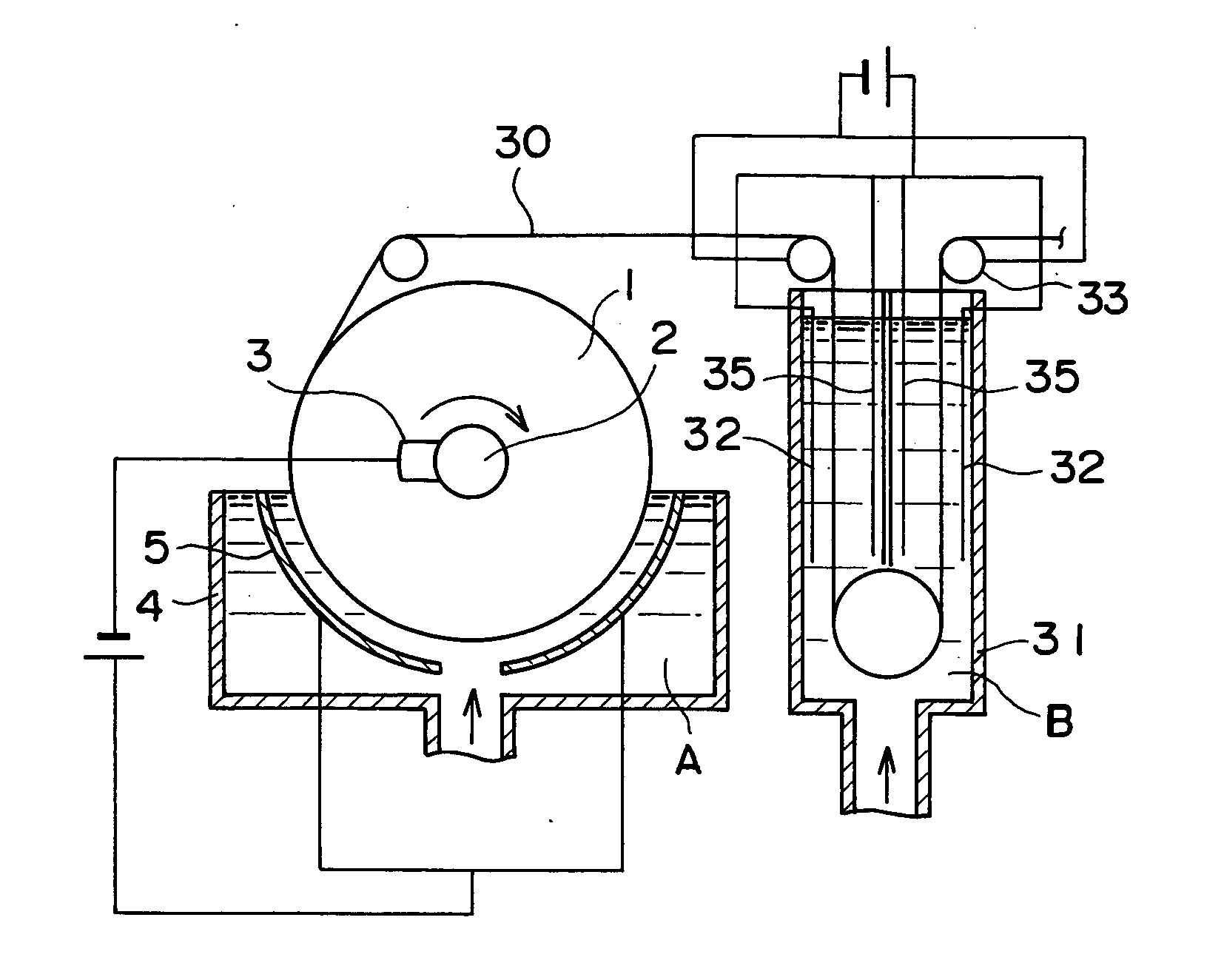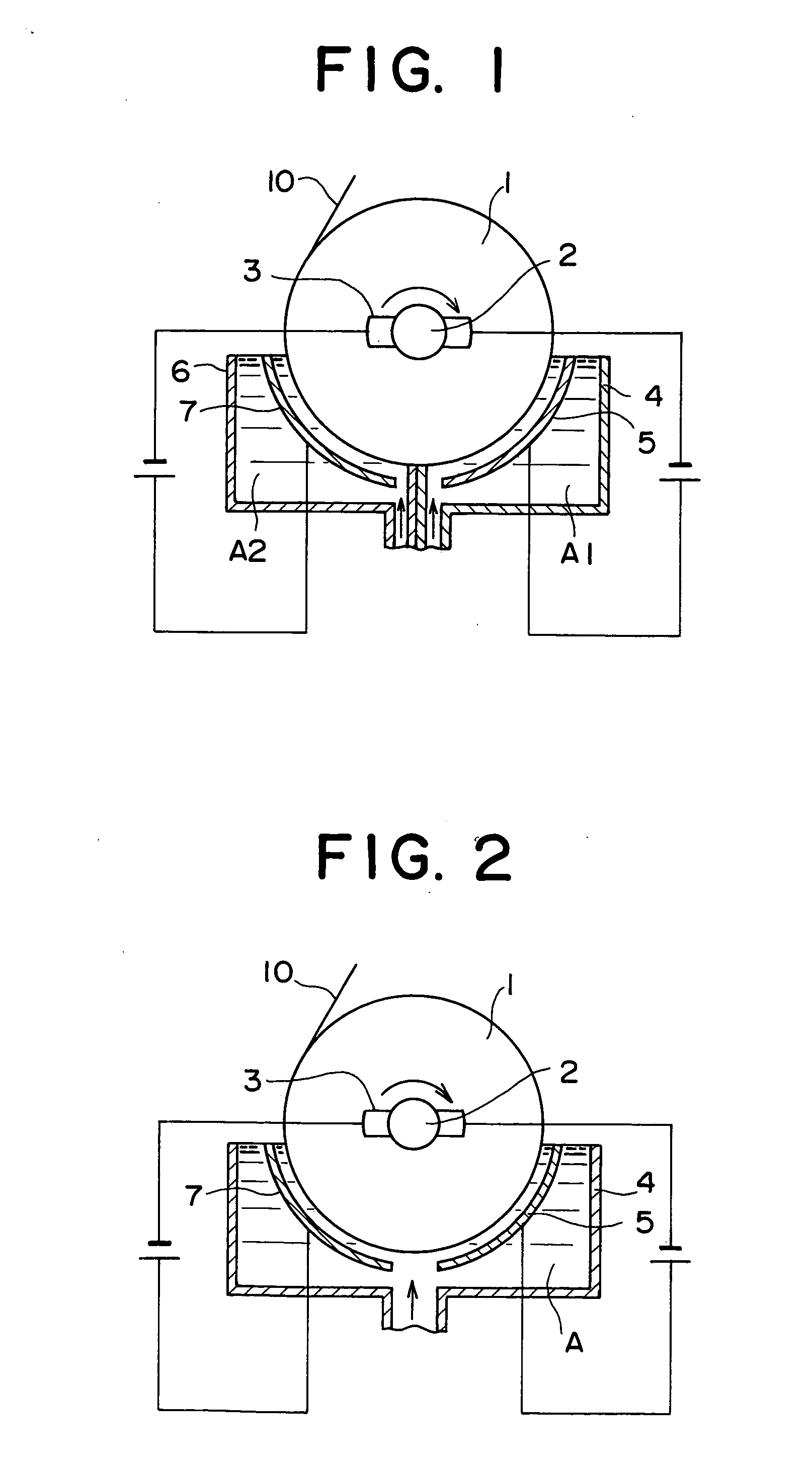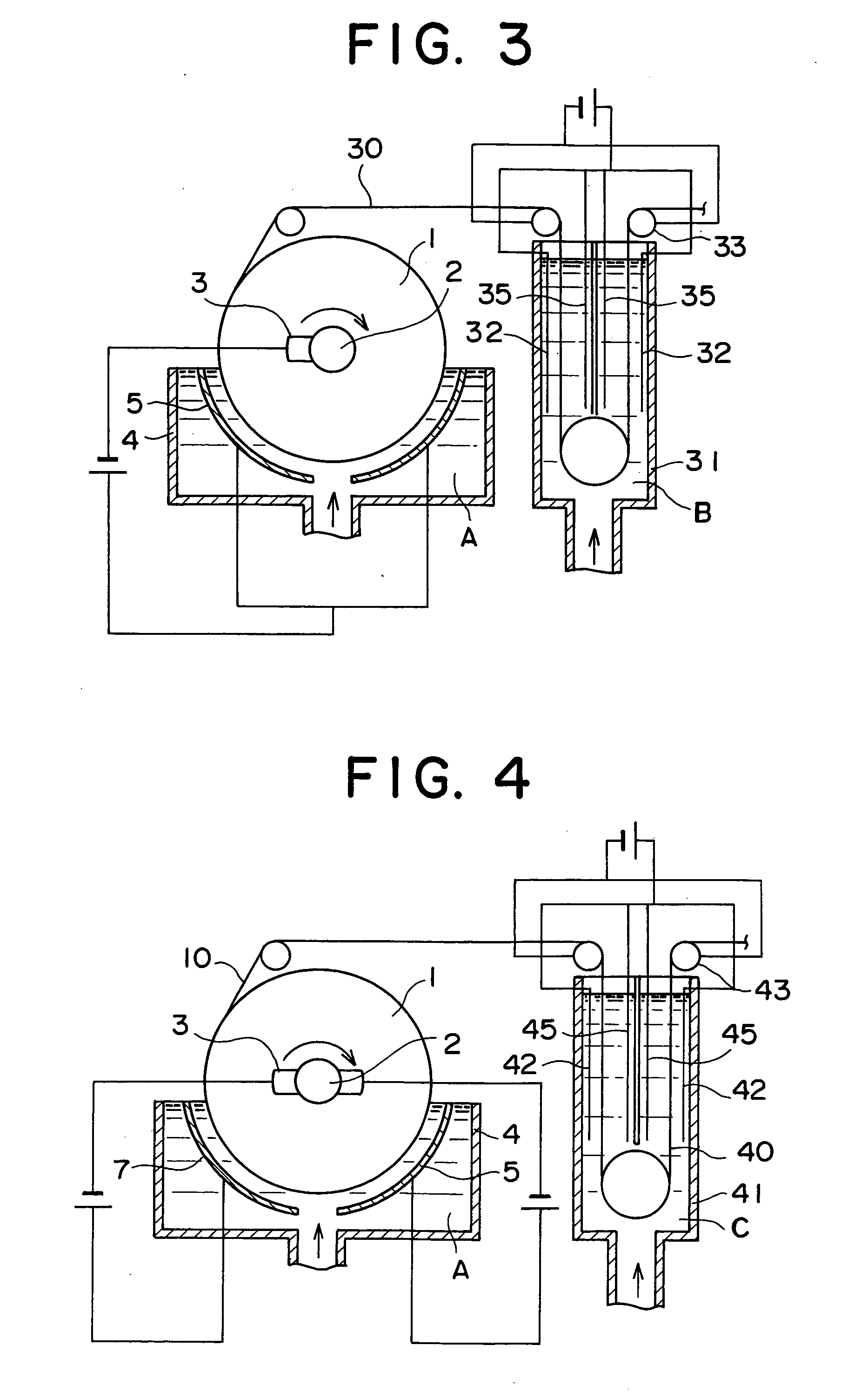Copper foil for high frequency circuit, method of production and apparatus for production of same, and high frequency circuit using copper foil
a high-frequency circuit and copper foil technology, applied in the field of copper foil, can solve problems such as dielectric loss, drop in bond strength of copper foil and circuit board, increase in transmission loss due to conductor loss and bond strength drop, etc., and achieve excellent bond strength and reduce transmission loss
- Summary
- Abstract
- Description
- Claims
- Application Information
AI Technical Summary
Benefits of technology
Problems solved by technology
Method used
Image
Examples
example 1
Using a titanium electrolytic drum polished smoothly by #2000 buff as a cathode, a 28 μm copper foil was prepared by granular layer plating. The copper foil was peeled off from the titanium electrolytic drum, then a 2 μm columnar layer was plated on its shiny side, that is, granular surface which had been in contact with titanium electrolytic drum (granular layer: about 93%). This was then further nickel plated, zinc plated, chromate treated, then treated by a silane coupling agent.
example 2
In the same way as in Example 1, a 26 μm copper foil was prepared by granular layer plating, peeled off from the titanium electrolytic drum, plated on its shiny side with a 4 μm columnar layer (granular layer: about 87%), then further nickel plated, zinc plated, chromate treated, then treated by a silane coupling agent.
example 3
In the same way as in Example 1, a 24 μm copper foil was prepared by granular layer plating, peeled off from the titanium electrolytic drum, plated on its shiny side with a 6 μm columnar layer (granular layer: about 80%), then further nickel plated, zinc plated, chromate treated, then treated by a silane coupling agent.
PUM
| Property | Measurement | Unit |
|---|---|---|
| roughness | aaaaa | aaaaa |
| roughness | aaaaa | aaaaa |
| roughness | aaaaa | aaaaa |
Abstract
Description
Claims
Application Information
 Login to View More
Login to View More - R&D
- Intellectual Property
- Life Sciences
- Materials
- Tech Scout
- Unparalleled Data Quality
- Higher Quality Content
- 60% Fewer Hallucinations
Browse by: Latest US Patents, China's latest patents, Technical Efficacy Thesaurus, Application Domain, Technology Topic, Popular Technical Reports.
© 2025 PatSnap. All rights reserved.Legal|Privacy policy|Modern Slavery Act Transparency Statement|Sitemap|About US| Contact US: help@patsnap.com



